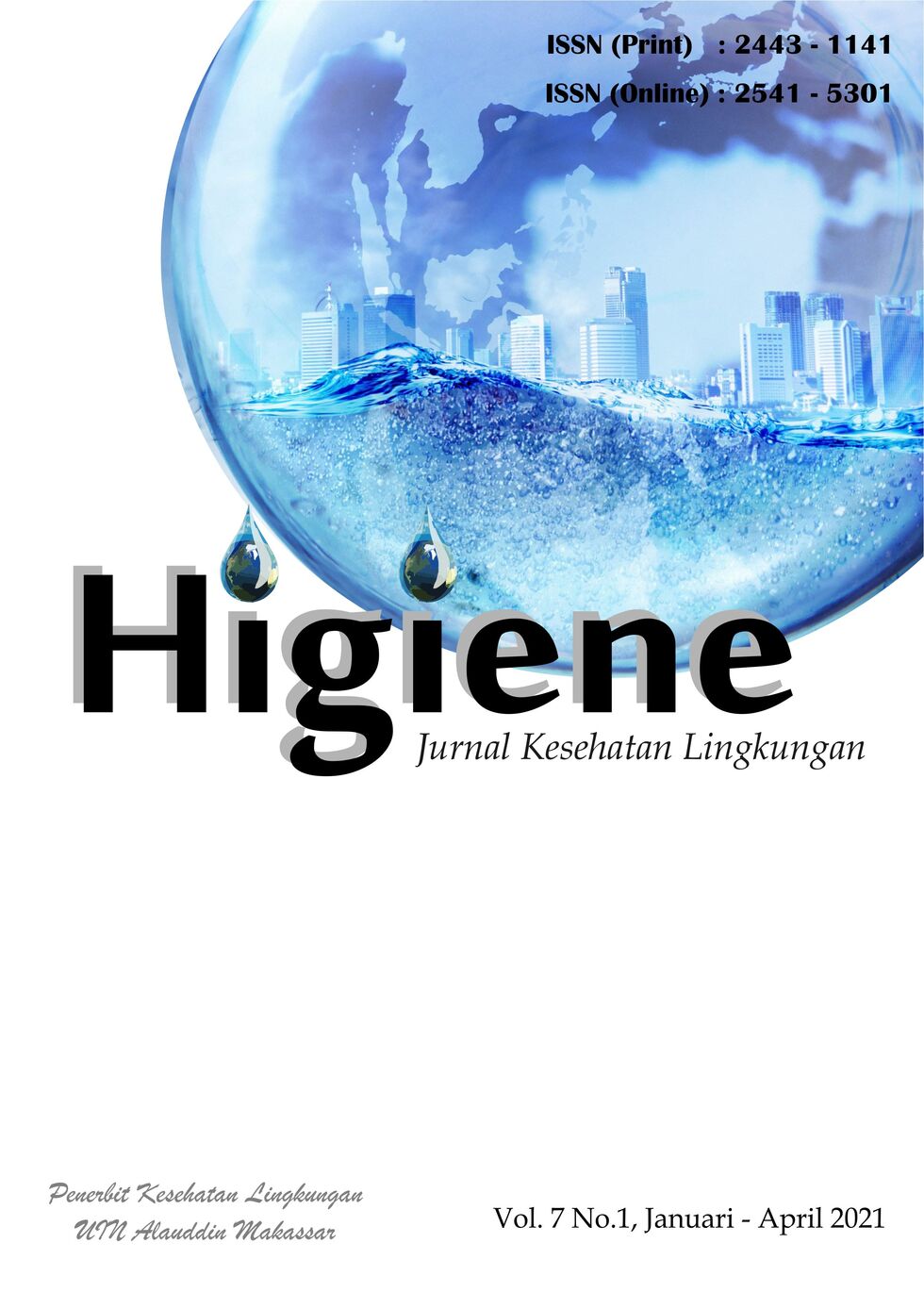Kandungan Mikroplastik Pada Garam di Pasar Terong Kelurahan Bontoala Kota Makassar
Abstract
Salt is a white, crystalline solid which is a collection of compounds with the largest portion of Sodium Chloride (more than 8%) and other compounds such as Magnesium Chloride, Magnesium Sulfate, Calcium Chlorida, and others. Salt has properties or characteristics which means it is easy to absorb water, bulkdensity (density level) of 0.8 to 0.9 and melting point at a temperature level of 801°C. To determine the microplastic content of salt in the Terong Market, Bontoala Village, Makasaar City in 2019. This type of research is an observational study with a descriptive approach. The results of this study indicate that all salt samples examined at the Marine Ecotoxicology Laboratory, Department of Marine Sciences, Faculty of Marine Sciences and Fisheries, Hasanuddin University, Makassar 100% contain microplastics. The author suggests to the public to pay more attention to the environmental cleanliness of the eggplant market in order to avoid the effects of environmental pollution and reduce the use of excessive plastic.
Keywords: Salt, Microplastic, Traditional Market
References
Adiraga, Y., & Setiawan, A.H. (2014). Analisis Dampak Perubahan Curah Hujan, Luas Tambak Garam dan Jumlah Petani Garam Terhadap Produksi Usaha Garam Rakyat di Kecamatan Juwana Kabupaten Pati Periode 2003-2012. Diponogoro Journal of Economics, 3(1), 1-13.
Cózar, A., Echevarría, F., González-Gordillo, J. I., Irigoien, X., Úbeda, B., Hernández-León, S., ... & Duarte, C. M. (2014). Plastic debris in the open ocean. Proceedings of the National Academy of Sciences, 111(28), 10239-10244.
Haward M. (2018). Plastic pollution of the world ’ s seas and oceans as a contemporary challenge in ocean governance. Nature Commun 9 (1): 667. https://doi.org/10.1038/s41467-018-03104-3.
Jambeck, J. R., Geyer, R., Wilcox, C., Siegler, T. R., Perryman, M., Andrady, A., ... & Law, K. L. (2015). Plastic waste inputs from land into the ocean. Science, 347(6223), 768-771.
Rochman, C. M., Tahir, A., Williams, S. L., Baxa, D. V., Lam, R., Miller, J. T., … Teh, S. J. (2015). Anthropogenic debris in seafood: Plastic debris and fibers from textiles in fish and bivalves sold for human consumption. Scientific Reports, 5(1), 14340. https://doi.org/10.1038/srep14340
Widianarko, Budi dan Inneke Hantoro. (2018). Mikroplastik dalam Seafood di Pantai Utara Jawa. Universitas Katolik Soegijapranata. Semarang.
Zhang W, Zhang S, Wang J, Wang Y, Mu J, Wang P, Lin X, Ma D. (2017). Microplastic pollution in the surface waters of the Bohai Sea, China. Environ Pollut 231: 541-548.
Copyright (c) 2021 HIGIENE: Jurnal Kesehatan Lingkungan

This work is licensed under a Creative Commons Attribution 4.0 International License.


